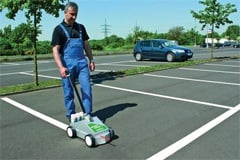Does the traffic in your premises need better managing?
You probably know it is a good idea to keep pedestrians and vehicles apart. So do most companies. But still one in eight workplace fatalities involves moving vehicles. They typically take place in loading bays, car parks and warehouses.
Health & Safety Executive (HSE) figures show that there were 16 fatal accidents and more than 500 major incidents that involved vehicles on work premises in 2013/14.
As a result, a company called Slingsby is advising all organisations to evaluate their traffic management systems at least once a year and has compiled a list of key considerations to take into account when doing so to help you.
It has a reason for doing this – it sells products intended to keep vehicles and people from colliding. Nevertheless, if some of its products can make your premises safer and keep you out of conflict with HSE, it might be worth your while taking a look.
Lee Wright, Group Sales and Marketing Director at Slingsby, says: "Although long-term there is a downward trend when it comes to vehicle related accidents, most of those that still occur are preventable. Often making a few simple improvements, such as installing traffic-calming measures or adding signage, can have a big impact when it comes to vehicle safety.
"The law requires premises that vehicles access to be organised in such a way that pedestrians and vehicles can circulate safely together, which means creating designated traffic routes."
Slingsby's 10 essential considerations to help you improve vehicle safety on your premises are these:
- When marking lines, it’s important to use an appropriate product that suits both the floor surface and the types of traffic that will be travelling over it.
- Wherever possible separate routes should be created for pedestrians to keep them as far away as possible from vehicles.
- All routes should be clearly visible which means ensuring they are well maintained and kept clean.
- Barriers should be fitted in particularly dangerous areas or where there is a risk that a pedestrian could walk straight into a vehicle route.
- Crossing points need careful consideration when it comes to deciding where to position them in order to maximise visibility.
- It’s also important to consider how to identify crossing points and what precautions to use to warn both vehicles and pedestrians they are approaching them.
- Ideally vehicles and pedestrians should use separate doors to enter and exit buildings
- Consider the procedures that are in place for vehicles when they are reversing. Often installing mirrors and using specially trained banksmen can significantly improve safety.
- Regularly review the procedures and instructions that new drivers visiting the premises receive.
- Think about whether installing new signage or lighting could have an impact on safety and help to highlight potential hazards.
If you do that and think you could do with a few products to improve your traffic/pedestrian interface management, you can see what the company has on its website www.slingsby.com or call 0800 294 4440.

